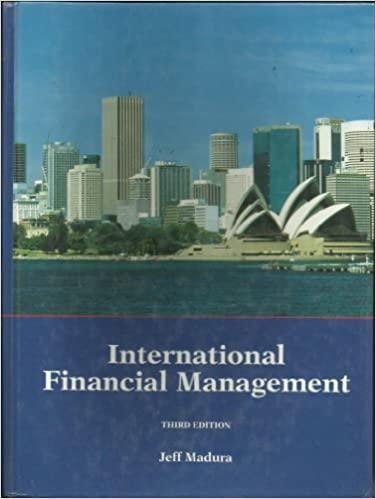Answered step by step
Verified Expert Solution
Question
1 Approved Answer
Consider the case of Purple Panda Pharmaceuticals Inc.: Purple Panda Pharmaceuticals Inc. is expected to generate a free cash flow ( FCF ) of $
Consider the case of Purple Panda Pharmaceuticals Inc.: Purple Panda Pharmaceuticals Inc. is expected to generate a free cash flow FCF of $ this year, and the FCF is expected to grow at a rate of over the following two years FCF and FCF After the third year, however, the company's FCFs are expected to grow at a constant rate of per year, which will last forever FCFinfty If Purple Panda's weighted average cost of capital WACC is complete the following table and compute the current value of Purple Panda's operations. Round all dollar amounts to the nearest whole dollar, and assume that the firm does not here any nonoperating assets in its balance sheet and that all FCFs occur at the end of each year.Purple Panda's debt has a market value of $ and Purple Panda has no preferred stock in its capital structure. If Purple Panda has shares of common stock outstanding, then the total value of the company's common equity is and the estimated intrinsic value per share of its common stock is per share.Consider the case of Purple Panda Pharmaceuticals Inc.:
Purple Panda Pharmaceuticals Inc. is expected to generate a free cash flow FCF of $ this year, and the FCF is expected to grow at a rate of
over the following two years and After the third year, however, the company's FCFs are expected to grow at a constant rate of
per year, which will last forever If Purple Panda's weighted average cost of capital WACC is complete the following table and
compute the current value of Purple Panda's operations. Round all dollar amounts to the nearest whole dollar, and assume that the firm does not have
any nonoperating assets in its balance sheet and that all FCFs occur at the end of each year.
Purple Panda's debt has a market value of $ and Purple Panda has no preferred stock in its capital structure. If Purple Panda has
shares of common stock outstanding, then the total value of the company's common equity is and the estimated intrinsic value
per share of its common stock is
per share rounded to the nearest dollar
Assume the following:
The end of Year differentiates Purple Panda's shortterm and longterm FCFs
Professionallyconducted studies have shown that more than of the average company's share price is attributable to longterm
rather than shorttermcash flows.
Is the percentage of Purple Panda's expected longterm cash flows consistent with the value cited in the professional studies?
No because the percentage of Purple Panda's expected longterm cash flows is actually
No because only of the firm's share price is derived from its expected longterm free cash flows.
Yes, because of the firm's share price is derived from its expected longterm free cash flows.
Yes, because of the firm's share price is derived from its expected longterm free cash flows.

Step by Step Solution
There are 3 Steps involved in it
Step: 1

Get Instant Access to Expert-Tailored Solutions
See step-by-step solutions with expert insights and AI powered tools for academic success
Step: 2

Step: 3

Ace Your Homework with AI
Get the answers you need in no time with our AI-driven, step-by-step assistance
Get Started


